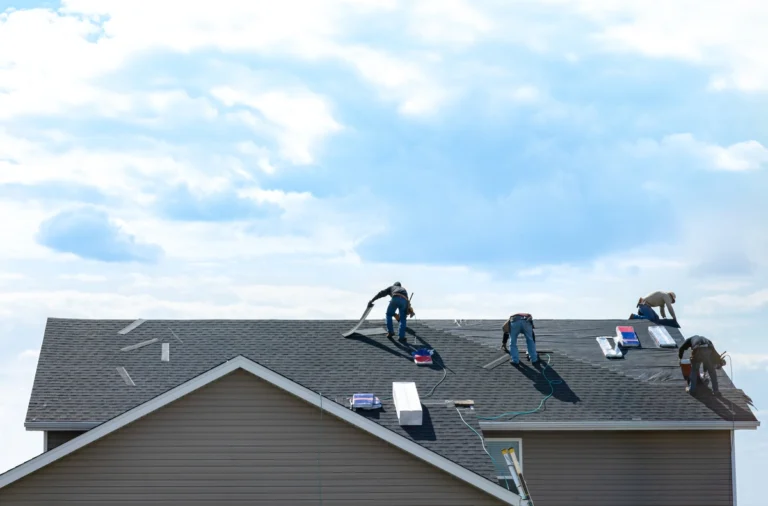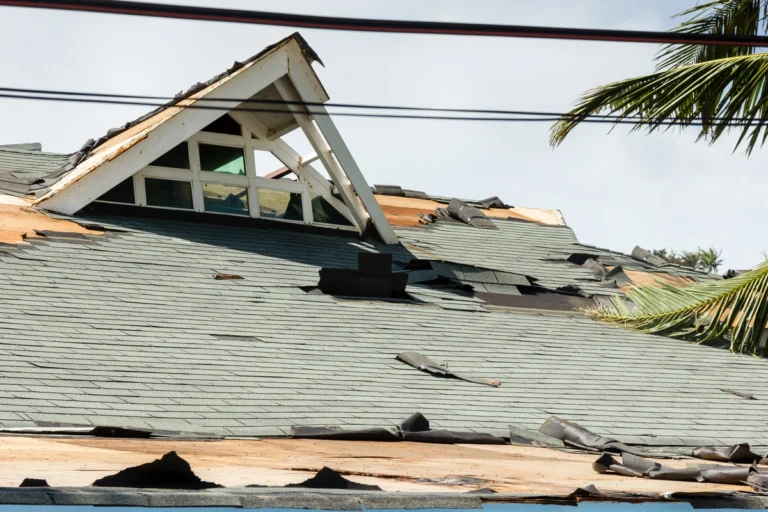Choosing what roofing material to use when building or re-roofing your home is a big decision. This choice will affect how long your roof lasts as well as the cost and maintenance required.
When installing a new roof, choosing the longest-lasting roof will cost more upfront but will save you money in the future.
What to Consider when Choosing Roofing Materials
Beyond the longevity of roofing materials, there are several factors to consider when building or re-roofing your home. Some of them include the following:
- Cost: Longer-lasting roofing materials will be more expensive, but you don’t need to replace them as often.
- Aesthetics: Each common roofing material has a unique look.
- Maintenance: Make sure to understand and be prepared for the maintenance your new roof will require.
- Repair costs: Severe weather conditions often damage roofs, and different materials can be replaced with greater ease or difficulty as well as varying in cost.
- Return on investment: If you know you will be selling your home, consider whether the cost of a longer-lasting roof will be reflected in the sales price or if a low-cost roof is a better option.
The Longest-Lasting Roof Materials
The roofs with the longest life expectancy include clay, concrete, and slate. These materials decay more slowly than others, giving these durable roofing materials an average lifespan of 100 years or more.
Slate Roofs Pros and Cons

Slate tiles are made from naturally occurring stone. They come in multiple colors. Slate is a heavy and dense material, which has pros and cons.
A slate roof is extremely low maintenance, requiring nothing more than checking for damaged tiles and cleaning gutters and valleys. Slate is durable, fire resistant, energy efficient, and environmentally friendly.
However, slate roofing is probably the most expensive type of roofing. This expense is, in part, due to it requiring specialized installation and also the weight of a stone roof, which may require that your house be reinforced before installation.
Concrete Pros and Cons
Concrete tiles are made from a mixture of water, sand, and cement with iron oxide added for pigment.
The advantages of a concrete roof include its resistance to wind, extreme temperatures, rot, insects, and even earthquakes. Concrete can reduce the transfer of outdoor heat to an attic by almost 50% compared to an asphalt shingle roof.
Concrete has its downfalls as well. Like slate, it is a costly and heavy option. While they can survive many weather conditions, the tiles are susceptible to blunt force, such as tree branches or large hail. They are also prone to color fading from UV rays and can accumulate dirt and algae.
Clay Pros and Cons
Like slate and concrete, clay tiles are made of natural compounds from the earth. They come in several shapes, each with unique benefits.
Clay also lasts far longer than common roofing materials, like asphalt shingles or metal roofing. It requires little maintenance, can withstand high winds, resists fire, keeps your home cool, and can increase your home’s value.
The downside of clay is its price per square foot, which will be at least twice as much as asphalt shingles. It is also prone to cracking in cold weather and is, therefore, only suitable in warmer climates.
Less Expensive Roofing Materials Have Shorter Lifespans
If you’re looking for the longest-lasting roof, you should expect to pay top dollar for concrete, slate, or clay tile. In the long term, replacing your roof less often will equal financial savings.
However, if you can’t fork out that much for your roof replacement right now, or if you don’t plan to live in your current home long-term, a less expensive – and less durable – option may be right for you.
Asphalt Shingles Pros and Cons

Asphalt shingles are the most common roofing material and cost much less than tile roofs, but you will make several sacrifices by choosing asphalt. Mainly, their life expectancy is only 15-20 years, so if you anticipate still living in your current home that long, you should plan to replace it.
Besides being the least expensive option, an asphalt shingle roof is the easiest type to install, and its light weight won’t strain your home’s structure or require extra reinforcement. Shingles also come in the widest array of colors and are easy to fit complicated roof lines.
Along with their shorter life expectancy, shingles are prone to damage from wind, extreme temperature fluctuations, and hail. It is, fortunately, quite easy to replace single shingles as needed, but this is a task most homeowners would rather avoid.
Other Roofing Options
Replacing existing shingles with architectural asphalt can increase the average lifespan of your roof by 10-15 years. They are made from several layers of fiberglass, asphalt, and ceramic-coated minerals.
Another shorter-lived roof is wood roofing. Roofs with wood shingles and wood shake last around 30 years.
A standing seam metal roof lasts 40-80 years. However, since they are less expensive than the longest-lasting roofs, metal roofs can be a good option.
How to Get the Most Out of Your Roof
No matter what type of roofing material you choose, proper maintenance is crucial in getting the longest lifespan possible out of your roof.
Make sure you understand the proper care of your roofing material and your individual roof. Not all roofs are the same. They have various degrees of steepness, protrusions like skylights or chimneys, and valleys where different rooflines meet and debris can build up.
Regular maintenance should be a major factor in the upkeep of your house. Many homeowners who don’t take proper care of their roofs end up with unexpected repairs or replacing their roofs sooner than anticipated.
Choosing Your Roofing Materials
When planning the roof for your home, consider all the factors to determine the best roofing material for your needs.
Whether you go with the longest-lasting roof, so you never have to replace it again, or choose one with a lower price per square foot to save money on a short-term living arrangement, there is a right roofing material for every home. With the right choice, you will love every square foot of your new roof.





